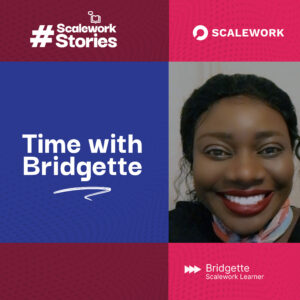It’s unsurprising that in the era of big data, business institutions can no longer rely on nebulous or out-of-date indicators like trend lines, relative strength ratings, and other similar metrics for sales forecasting.
Advanced analytics and machine learning has ushered in a new era of accurate business intelligence by blending traditional data analysis methods with complex mathematical models and software tools to produce industry-leading predictive models and results, allowing businesses to make judgments and forecasts that offer them an advantage over their competitors.
What is sales forecasting?
Sales forecasting refers to the process by which future sales volumes are known. It determines how much of a product will be sold in a specific amount of time, in which market, and for what price. By anticipating short- and long-term results, it encourages and assists in the formulation of well-informed business decisions. In addition to projecting sales, this type of forecasting is beneficial for generating insights about how a company’s workforce, resources, and cash flows should be managed. This is a vital performance measure for businesses seeking to collate investment capital, as well as ensuring appropriate allocation of internal resources to capitalize on predictions or trends.
Sales forecasts are usually based on historical data, industry trends, and the current state of the sales funnel. These forecasts, however, should be viewed as a guide rather than a precise prediction, and can be used to forecast sales income on a weekly, monthly, quarterly, or annual basis.

Why is sales forecasting critical for both large and small businesses?
Here are the reasons:
Demand-driven supply: A company’s ability to deliver the required quantity at the correct time depends on accurate sales forecasting. Some companies manufacture on a per-order basis, but most companies build materials in advance to fulfil future demand.
Creating Marketing Strategies; The marketing department of many organizations rely largely on sales forecasts. Marketers can then increase their advertising budgets, better target their clients, re-evaluate product positioning or the market based on how good or bad the prognosis looks.
Planning budgets: Forecasts can also be used to plan marketing budget on a quarterly or annual basis, as well as to set campaign goals and to create a projection of the market share it may aspire to capture over the forecasting period. Simply put, a sales forecast is an assessment of a company’s future sales potential.
Production control: sales forecasts aid in better production control, such as better equipment utilization, labour time management, improved deliveries, and inventory control of work-in-progress items.
Effective inventory management: Businesses must not only produce adequate products, but also keep track of and manage inventories on a regular basis. Many organizations fail to efficiently manage inventory due to a lack of information about future product demand. Many businesses experience overstocking and stock-out issues because of poor inventory management.
How can traditional sales forecasting be translated into today?
There is a variety of traditional approaches for estimating sales that many businesses use till today. Two or more of these strategies could be combined to produce a layered approach. When compared to employing a single method, this allows for greater precision. A few of such methods includes:
The sales team’s recommendation: Salespeople are most likely to know their customers, how long it will take to close a deal, and what the stakes are. It is a no-brainer to not listen to your sales team when doing sales forecast right?
However, there are certain drawbacks to this strategy: it can only be used for short-term forecasting i.e., up to a year. Furthermore, because forecasting is based on salespeople’s predictions and sales quotas are usually fixed, salespeople tend to underestimate projections, and their predictions are frequently erroneous because they are unaware of economic changes.
Historical data and records; Another method used in sales forecasting is to examine historical data from a specific time to predict how the company will perform in similar situations in the future. Calculating how much sales were this time last year and factoring in year-over-year gain percentages is one-way corporations like to apply this method. This strategy fails to account for changes in the environment between the past and present, even though it is based on accurate, documented data. External influences can include the following: total number of salespeople, the uniqueness of products, increased or decreased rival performance, market and industry conditions, and the status of the market and industry.
Deal stages: This approach of sales forecasting entailed assigning a probability of closing a deal to each stage of the sales process, then multiplying that likelihood by the size of the opportunities to generate a revenue estimate. This forecasting method is still simple and thus one of the most popular ones.

How can advanced analytics and machine learning help in sales forecasting?
In most industries, sales practices such as cold calling, foot-in-the-door, pitching, and solution-selling remain firmly established in the previous century. What if we told you there was a more effective approach to identify prospects, forecast their behaviour, and close deals?
By combining data from a range of internal and external sources with complex algorithms, you can utilize predictive analytics and machine learning models to obtain meaningful insights regarding prospect demands, industry trends, and competitor behaviour.
Accurate sales forecasts
It is no secret and we all know it: Not all forecasts are accurate 100% of the time. There is no statistical formula that can predict the magnitude, outcome, or exact timing of an event. However, sales forecasting can be increased from the industry standard of 60-70 % to well over 80 % using predictive analytics and machine learning models. To do so, you must first choose a forecasting model that meets your specific business needs and then train it with the appropriate data.
Estimate the chance of a product sale
Would you like accurate, actionable data on who is most likely to acquire your products and services as first-time consumers or recurring customers?
Based on previous sales, consumer interactions with your emails and websites, demographics, location, and other data, you may use predictive analytics and machine learning models to forecast the likelihood of a prospect purchasing your product or service. The model compares potential buyers’ pre-purchase behaviour to that of your existing customers. Using this information, you may categorize and classify prospects based on their likelihood of purchasing your product or service. Your sales and marketing teams can then tailor their interactions with these prospects to maximize the chances of a deal closing. They can, for example, use individualized product combinations, value-added services, discounts, and other smart sales methods to target specific clients.
Over special offers on specific items
Everyone enjoys a good deal. On the other hand, poorly targeted or blanket discounts can significantly reduce your profit margins while providing little return on investment for your marketing activities. Predictive analytics and machine learning can be used to look at past and present data to evaluate if one discount level is likely to lead to more sales than another discount level would and depending on the nature of your business (B2C or B2B). Predictive analytics and machine learning can also be utilized to examine various demographics, geographies, and consumer kinds to determine which discounts have the highest conversion rates.
Improved pricing
Finally, using data from your competitors, market conditions, historical sales, internal costing, consumer behaviour, and a number of other sources, predictive analytics and machine learning can help you gain accurate insights to the following questions:
- What types of discounts and pricing are most likely to convert into sales and leads?
- How to use dynamic pricing to increase total revenue and profitability?
- What your market is going to be like in the future, and whether your pricing will be competitive?






